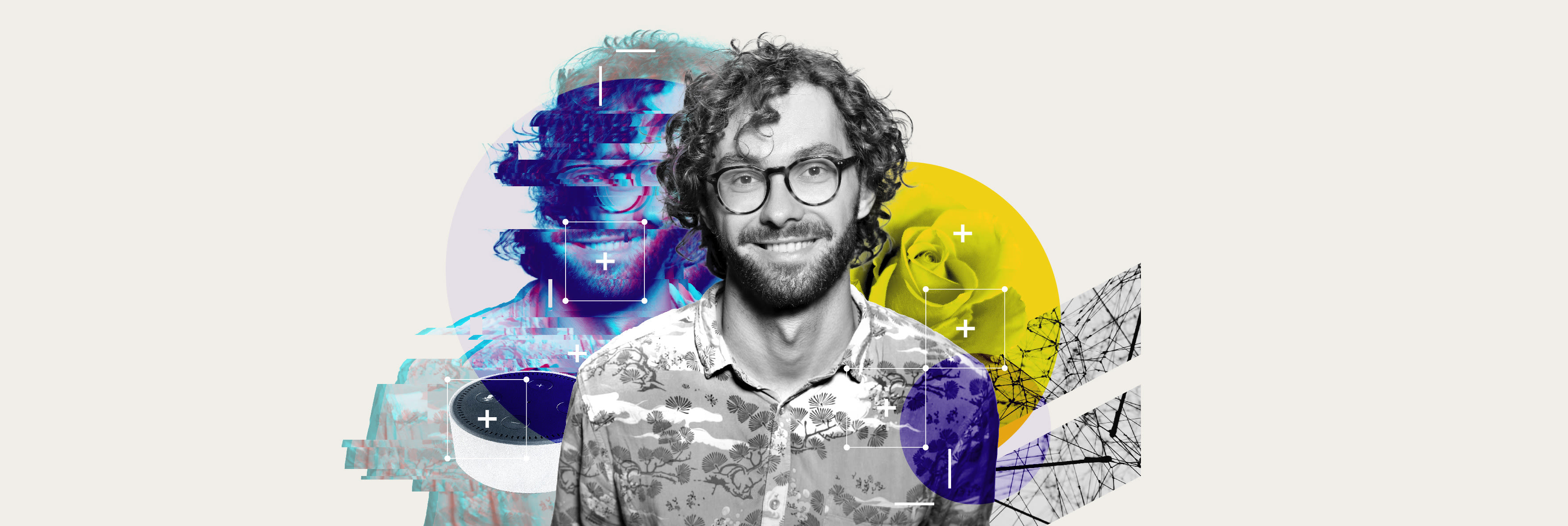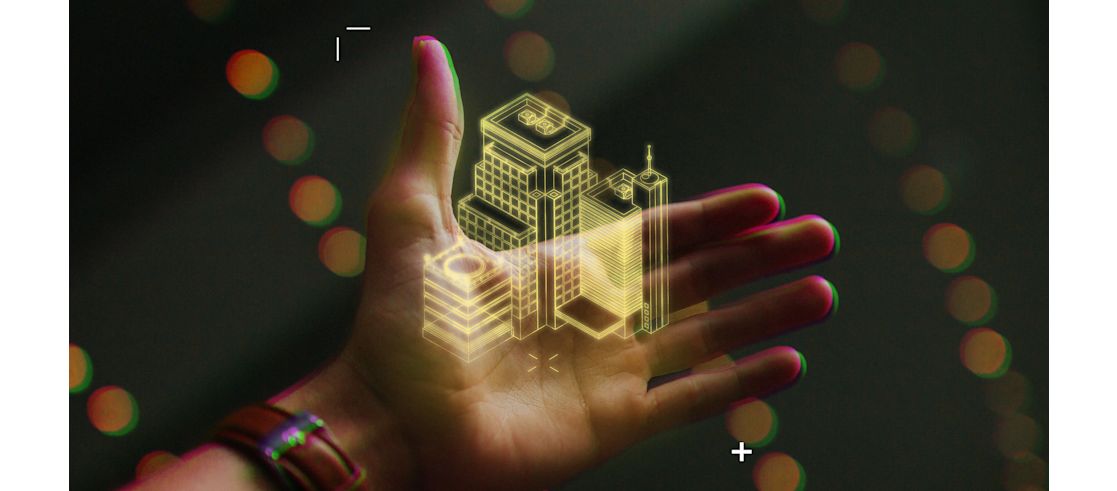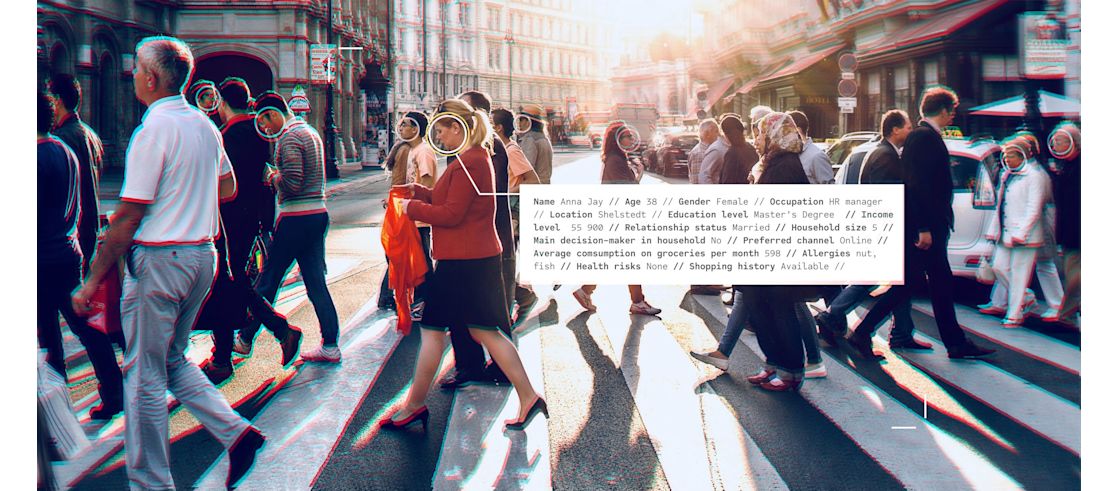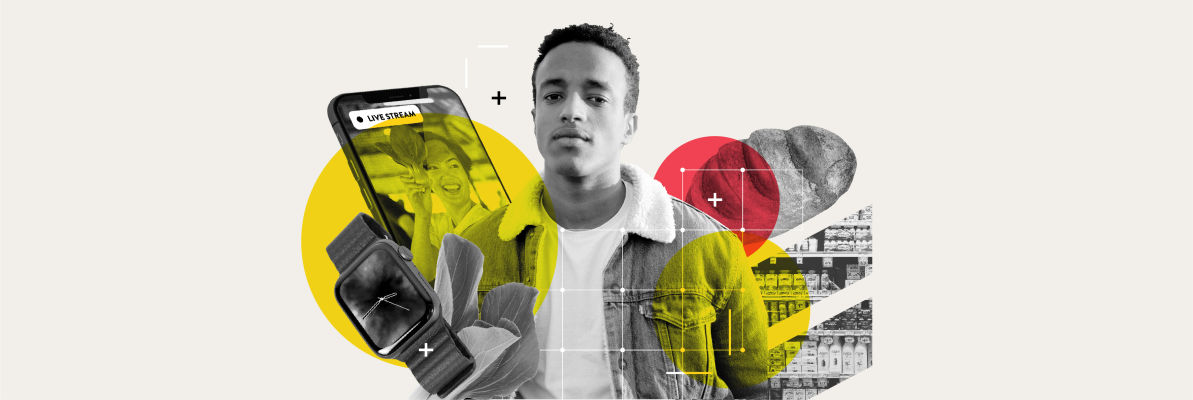
Restructuring services through digital twins
Do you have a digital twin? Me, too. Scenario 4 is a world where a digital replica of everything exists, and all significant changes can be tried out virtually before their implementation.
Hi, my name is Omppu. Ever since I was a child, I’ve loved digital twins. I loved the 1:1 version of the world they built in Minecraft. I adored SIMS 6, where I could create a SIM based on my social media feeds and see how it behaves based on an analysis of my postings. I also like to watch movies with me starring as the lead character and order shampoos branded with my name and face. I just find it all very entertaining.

I work as a data scientist/post-doctoral researcher in a project making a digital twin of a brand experience centre. My work is almost too overwhelming but very satisfying. I analyse and reformulate the flow of materials and where people direct their attention. The amount of data we deal with is incredible. When my people tease me, saying that I enjoy playing god, I tell them that I feel insignificant compared to the masses of data I face. I also get a lot of questions about face recognition, hinting that I can tell if their girlfriend went shopping for cosmetics in town last Saturday. No matter how specific I try to be about our approach to digital twins as ethical twins, people don’t believe me. I talk about data masking and video blurring, but they’re not convinced. I have no access to real-life identities, only to the replicas of their consuming bodies. To the untrained, it all seems the same. “Keep your hat white”, they say. “Don’t go evil on us.”

Building a virtual duplicate is expensive, but we have also gained savings by providing customers with better service, managing energy consumption and waste, improving mobility and infrastructure. I know my shopping mall through and through and in a way, when you play with it, it’s a bit like SIMS. I know the materials, I know what maintenance it needs... I know its customer segments and the number of platinum customers in our online store at any given time. I know the water footprints of individual products and their lifecycle from design to recycling. I see our combined inventory and can track the logistical route of each item. I can calculate the monetary, ecological and customer satisfaction effects of most potential changes.

One thing I love about my work is that despite all this, we still can’t prepare for everything. I don’t know about you guys, but to me, it is a great relief. Like last year, when people worked up huge crushes on products like Vilao buttermilk shampoo, Interblossom rose petal flour or the hair-loss reducing Anthrofix water, we saw on social media that demand will skyrocket but could do little to accommodate it. The same goes for product panics. Last holiday season, the sales of a well-known washing powder fell 42% because people were convinced that it contained Chinese nanosensors for tracking people. Funnily enough, when I walked to a 24/7 shop for my late-night snack, my Face did not work, and I had to use my card for paying. As stupid as it was, I thought - yes, I know, it’s the washing powder on my hoodie, it’s killing the circuit, this is the end. I think my reaction was very telling. When you are dealing with systems inside systems that are inside a system, you can be quite sure that there are even more meta-level systems above that you have no idea about.
BREAKDOWN OF THE SCENARIO
Consumers
In this world, there is a digital twin of every consumer. Some of the twins are very close to perfect, as the persons themselves are cultivating them purposefully, feeding them through sensors and live connections. People do this to run tests and try different scenarios on themselves: playing with appearances, dietary changes, and use of time and money. Some citizens would not even want to have a digital twin but cannot escape different public and private organisations making replicas for better planning and optimisation of services. This creates a tension where free will and systemic control have penetrated all conversations, culture and politics. Omppu talks about Digital twins as Ethical twins, which refers to fair and transparent use of data. People get scared easily, as innocent glitches can make them suspect the benevolence of the system. In the story, Omppu has to clear off such suspicions to his peers, but at the same time, he needs assurance himself.
Retailers
All retailers have digital twins of their customer base and can run tests and simulations that show how their customer segments would behave in different scenarios. They are also reaching for the perfect control of their facilities, processes, and products through simulations and virtual testing. Omppu is not building digital twins to have cool interfaces. He is just trying to manage a massive amount of big data that is growing every minute and massaging it into a form that is understandable, workable and connectable. The push comes from the sheer amount of data, the pull from the opportunity to gain predictability, adaptability, optimisation and personalisation – i.e., more efficient business models for basically all parts of the ecosystem. Full potential can only be reached with data partnerships. The sharing and openness in the retail ecosystem allow Omppu to build meta-level structures to analyse and optimise the value creation network in a systematic way.
Brands
Companies have collected customer data to gain insights on the kinds of products and services the customers might enjoy, value and buy almost as long as there has been commerce. In a sense, the digital twin as a concept is just an enhancement to this tradition. With digital twins, we have brought real-time data to a format that simulates how different customer segments would react to different brand strategies, narratives, or product lines. Behavioural modelling is essential to brands as their value is directly linked to the intangible and sometimes almost magical qualities people attach to them. However, the story implies that these processes can’t, after all, be controlled because consumers disseminate stories very efficiently through digital channels and change their minds about products overnight. If the human-brand relationship stays enigmatic, digital twins will provide some control over supply chains, manufacturing processes and maintenance of the facilities. They can be convenient in change management.
Logistics
Logistics companies have been forerunners in using sensory technologies, IoT and AI to optimise packaging, shipping, warehousing and last-mile delivery of goods processes.
Omppu’s digital twin of a brand experience centre has a real-time connection to a multitude of other digital twins inside and outside the centre. Digital twins of the products tell where they are, what or who is handling them and where they are on their way. Through their twins, the products indicate if they are approaching their expiry date or are broken. Omppu sees if a customer has picked one off the shelf and is leaving the physical store, using facial recognition to pay for it. In the larger scheme of things, the systemic orchestration of the multi-stakeholder logistics environment, with various systems for inventory management, cargo handling between ships, cranes, trucks and planes, order and information systems, as well as workforce needed in all parts of the value chain, is a big deal – both from the economic and environmental point of view. A digital twin can be a valuable paradigm to help reach sustainability goals in logistics.
Key technologies
People are a collection of their digital twins – not one, but many smaller ones: one for personal data, one for health data, one for purchase data, and another for gaming data, etc. The twins interact seamlessly with each other based on the privileges provided by the real person. Despite the fact that digital twins interact with each other and create a holistic picture of their source, it is highly unlikely that one entity would own the whole digital twin for a person - there will be privacy concerns and questions around ownership to be solved.
Creating and maintaining digital twins requires collecting and processing data on the real-life counterpart. Building efficient digital ecosystems that support various digital twins of grocery stores or the people who frequent them is no easy feat. There are countless hardware and software-related questions to answer, including “what ways of collecting data are available?”, “how is the data analysed?”, etc.
The more data is collected and analysed, the more raw computing power and physical storage is required to enable sophisticated simulation and prediction. Some of that computing is done on the edge and IoT devices and interconnected sensors that help collect and analyse the data. They will continue to grow more capable.
Data analysis and organisation methods will continue to evolve. In addition to the ownership of digital twin data, the consumer perspective must always include privacy and security - especially with solutions such as face recognition. And the data needs to be verifiable.
Developing digital twins is not cheap, and the story tells us that the return on investment (ROI) is expected in due time. It is likely that Omppu, as a postdoctoral researcher, is creating more of an approach than a bespoke system. With shared data structures and standardised ways of sharing and storing data, creating a digital twin of a singular entity or even an IoT system is relatively easy. Omppu is trying to establish fundamentally different kinds of processes that create various forms of data that then interact with each other - a task that requires outside help in the form of standardisations and shared data management rules. In large quantities of data, data science also helps detect things that humans miss. The EU is currently trying to create tools to help businesses collaborate and create new kinds of business models.
Technological enablers
- Digital twins
- Edge computing
- IoT devices
- Interconnected sensors
- Face recognition
Winners and losers
If Omppu gets his project documented and his dissertation done, he wins. The investments in digital twins are likely to pay off, and we will probably witness something like this scenario over the next decade. The world portrayed in this story allows a considerable degree of surveillance and segmentation of the population. It is our duty to keep the most Orwellian impulses of our societies at bay: be vigilant with privacy issues and always produce an unbiased analysis of what the data is being used for. Cases where user privacy is maintained and the user gains added value simultaneously are winners.











